Decoding Pain: The First Step to Effective Management
Pain is a complex and multifaceted experience that affects millions globally, ranging from short-lived acute episodes to persistent chronic conditions. Understanding the causes, types, and underlying mechanisms of pain is essential for developing effective management strategies. This article explores how lifestyle choices interplay with medical interventions to offer holistic and tailored solutions for pain relief, empowering readers with knowledge and practical approaches.
Unraveling Pain: Causes, Types, and Mechanisms
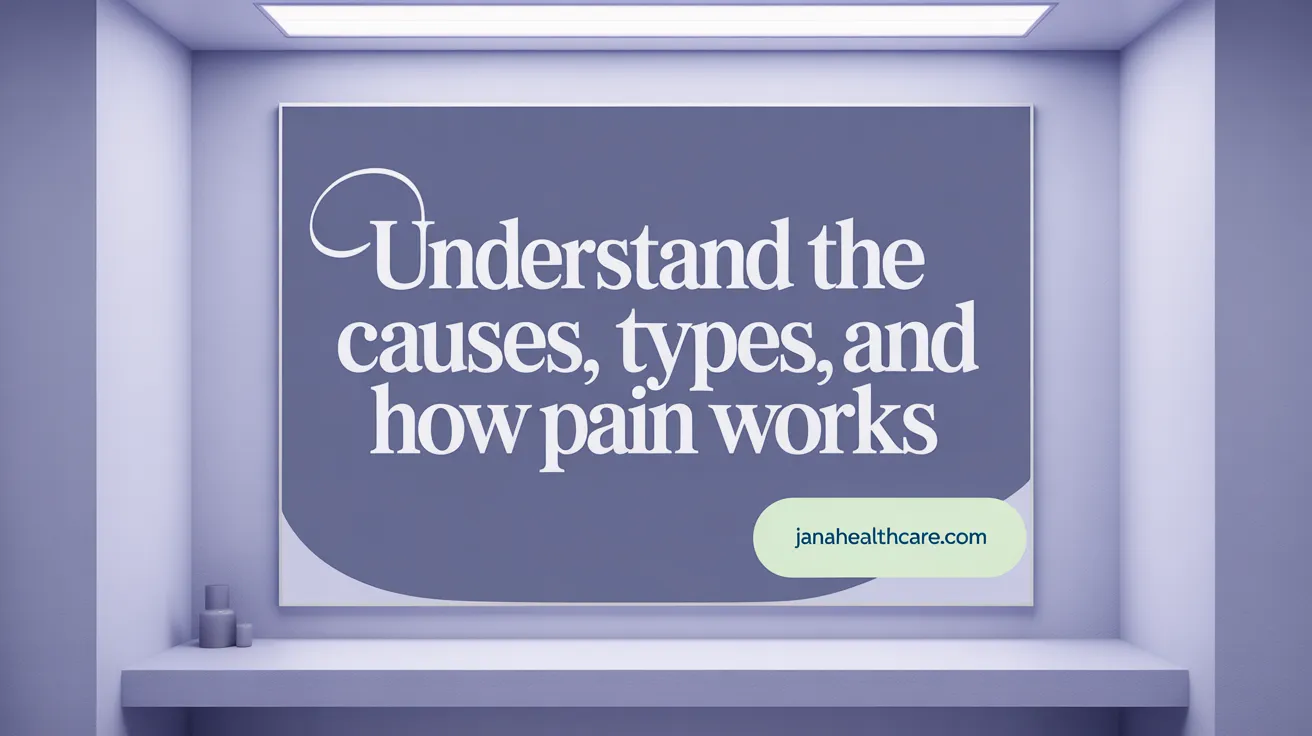
What are the main causes, types, and mechanisms of chronic and acute pain?
Pain serves as an essential warning system, alerting us to potential or actual tissue injury. It is broadly classified into two categories: acute pain and chronic pain. Acute pain typically results from immediate injuries such as cuts, fractures, burns, or surgical procedures. Its purpose is protective, signaling that tissue damage has occurred and prompting behaviors to prevent further harm.
In contrast, chronic pain persists beyond the normal healing period, often lasting longer than three months. It may stem from degenerative or inflammatory conditions like arthritis, neuropathy, or autoimmune diseases. Sometimes, it arises from ongoing infections or post-infectious syndromes, such as postherpetic neuralgia following shingles.
The underlying mechanisms differ between acute and chronic pain. Acute pain involves the activation of peripheral nociceptors—specialized nerve endings sensitive to damaging stimuli. These receptors transmit signals via A delta and C fibers to the dorsal root ganglia and onward to the brain for perception. This pathway is relatively straightforward, allowing the body to respond appropriately.
Chronic pain involves more complex neurophysiological processes. It often features neuroplastic changes—alterations in nerve pathways and brain circuits—that sustain pain even after the initial injury or stimulus has resolved. Central sensitization amplifies pain signals, making normally non-painful stimuli seem painful. Neuroinflammation, involving immune cell activation and cytokine release in neural tissue, contributes further to persistent pain states.
Infections can trigger pain through direct microbial invasion of tissues and by provoking immune responses. The immune system releases inflammatory mediators that sensitize nociceptors, heightening pain perception. Some infections lead to autoimmune reactions or molecular mimicry, damaging nervous tissue and resulting in chronic pain syndromes.
Effective management hinges on understanding these distinctions. While acute pain often responds well to pharmacologic therapy, interventions, and addressing the root cause, chronic pain requires a multidisciplinary approach. This includes medications, psychological therapies, physical rehabilitation, and lifestyle modifications to improve function and quality of life.
Lifestyle Factors Influencing Pain and Its Management
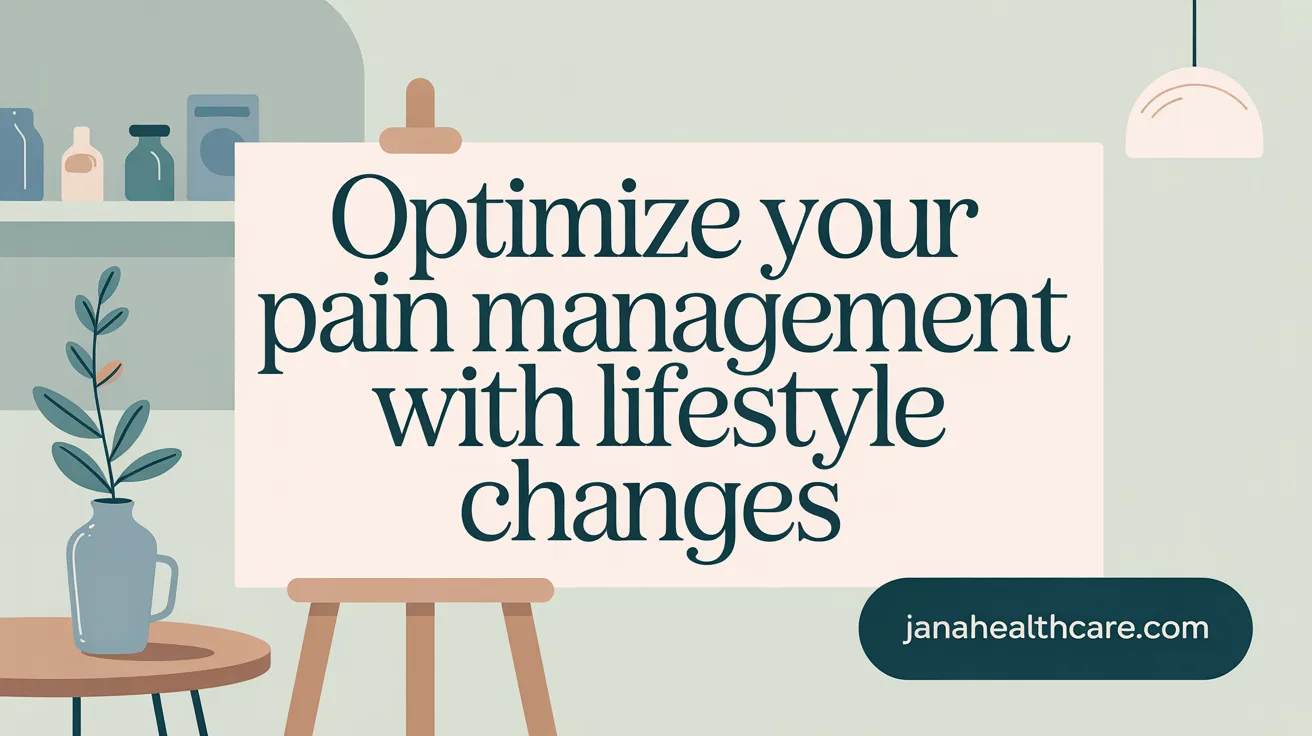
How do lifestyle factors impact pain management, including diet, exercise, sleep, stress, and substance use?
Lifestyle choices significantly influence the experience and management of chronic pain. Poor dietary habits, especially diets high in processed foods, trans fats, and refined sugars, can increase inflammation within the body, making pain worse. Conversely, a balanced diet rich in omega-3 fatty acids, fruits, vegetables, and whole grains helps reduce inflammation and support overall health (Healthy Diet for Pain Management, Anti-inflammatory diet foods, Lifestyle Changes for Chronic Pain).
Regular physical activity, such as walking, swimming, and gentle stretching, not only strengthens muscles and improves flexibility but also helps block pain signals and enhances mobility (Exercise for Pain Relief, Physical activity for pain relief, Exercise and chronic pain management). Staying well-hydrated supports muscle function and reduces pain, with recommended daily water intake of at least 2.7 liters for women and 3.7 liters for men (Hydration and Pain Reduction).
Adequate sleep is vital for pain control. Establishing a consistent sleep routine and creating a relaxing environment can help improve sleep quality, which in turn reduces pain perception (Sleep Hygiene and Chronic Pain, Improving Sleep for Pain Relief, Maintaining a regular sleep routine). High stress levels, however, can exacerbate pain by increasing muscle tension and inflammation. Stress reduction techniques like mindfulness, meditation, and breathing exercises are effective in calming the nervous system (Stress Reduction for Chronic Pain, Relaxation techniques for pain).
Substance use, including smoking and excessive alcohol intake, worsens pain outcomes. Smoking decreases blood flow and impairs healing, increasing pain sensitivity. Quitting smoking is a crucial step toward better pain management (Impact of Smoking on Pain, Smoking cessation benefits). Alcohol, especially when consumed in excess, can disrupt sleep and elevate inflammation, aggravating pain conditions (Alcohol and Chronic Pain).
Obesity is closely linked to chronic pain through increased mechanical strain on joints and the promotion of systemic inflammation. Losing weight through healthy eating and increased activity can alleviate pain, especially in conditions like osteoarthritis (Lifestyle behaviour change in chronic pain).
Furthermore, engaging with social support networks and addressing psychological factors, including emotional well-being and mental health, positively affects pain management. Practices like mindfulness, yoga, and social interactions foster resilience and reduce feelings of isolation, often accompanying chronic pain (Psychological therapies for pain, Yoga and tai chi for pain management, Mindfulness and meditation for pain).
In summary, addressing these interconnected lifestyle factors with personalized, multidisciplinary strategies can significantly improve pain outcomes, enhance quality of life, and reduce reliance on medications (Chronic Pain Management, Comprehensive Pain Management).
Harnessing Lifestyle Modifications for Pain Relief
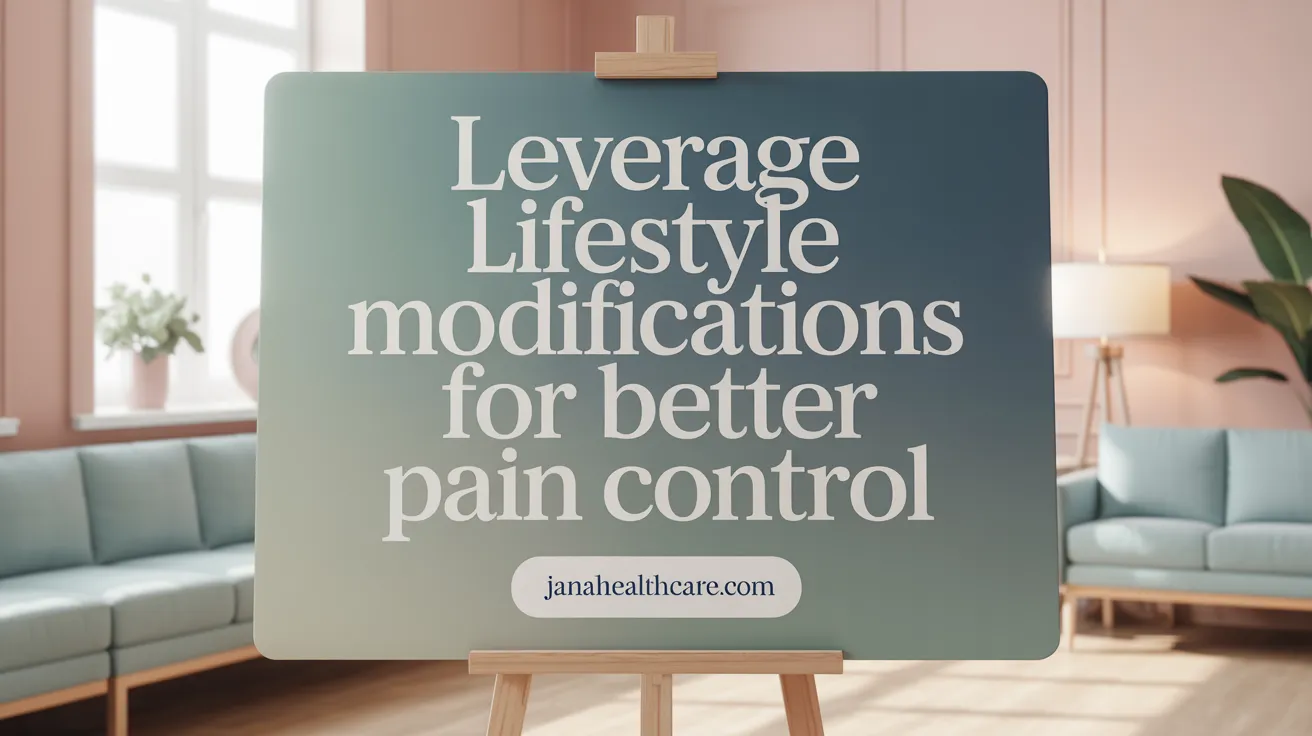
How can lifestyle modifications contribute to reducing and managing pain?
Lifestyle modifications are essential components in the comprehensive management of chronic pain. They address the fundamental factors that can intensify or perpetuate pain conditions. Engaging in regular exercise, such as walking, swimming, or gentle stretching, not only strengthens muscles and enhances flexibility but also helps to block pain signals from reaching the brain. These activities promote better joint and ligament health and reduce muscle tension.
Proper sleep hygiene is equally vital. Establishing consistent bedtimes, creating a relaxing pre-sleep routine, and maintaining a comfortable sleep environment can significantly improve sleep quality. Better sleep reduces inflammation and lowers stress hormones like cortisol, both of which are linked to pain intensification.
Dietary choices also play a critical role. Consuming a diet rich in anti-inflammatory foods—such as berries, leafy greens, fatty fish loaded with omega-3 fatty acids, nuts, and seeds—can help decrease systemic inflammation. This, in turn, can lessen pain severity and improve overall health.
Managing stress effectively through relaxation techniques like mindfulness meditation, deep breathing exercises, or yoga can reduce muscle tension and the body’s inflammatory response. Social support networks and positive lifestyle habits contribute to emotional resilience, helping individuals better cope with persistent pain.
Integrating these holistic approaches into daily routines promotes a sustainable, effective strategy for long-term pain control and improved quality of life.
Comprehensive Medical Interventions in Pain Management
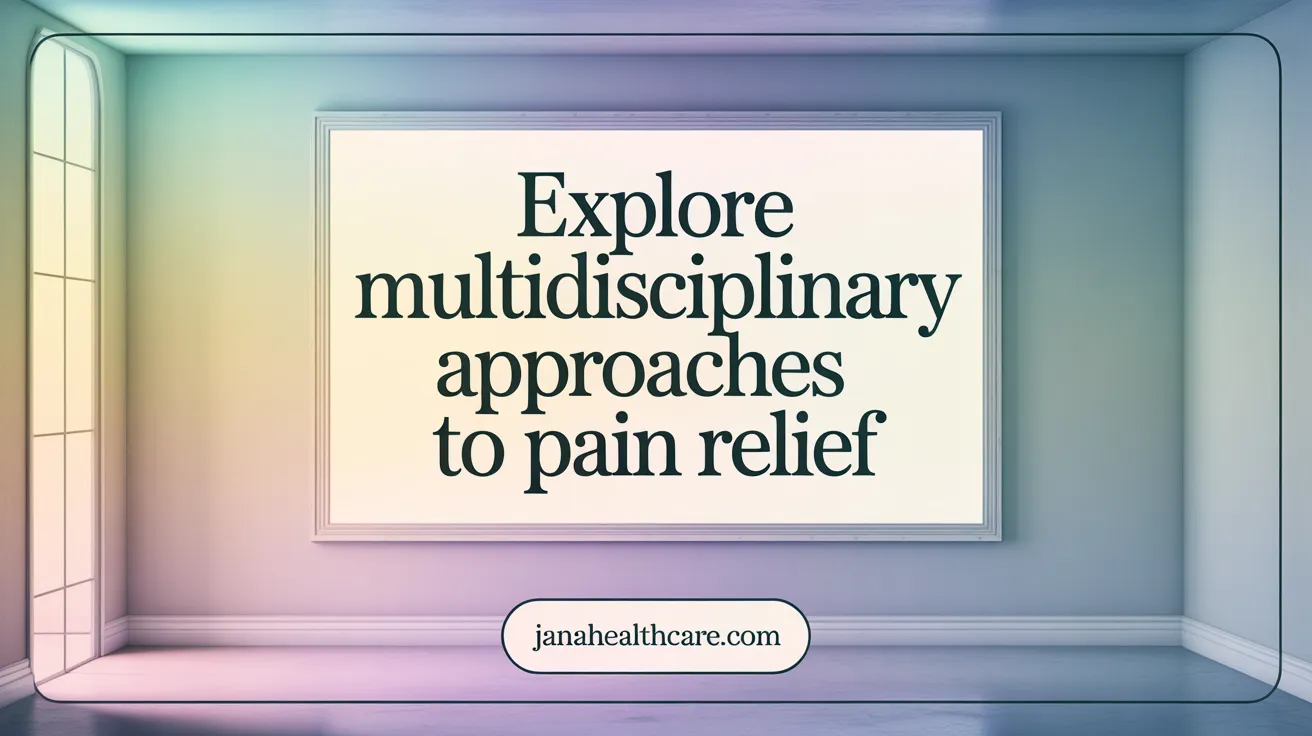 Pain management is a complex field that incorporates various medical interventions designed to alleviate suffering and restore function. These interventions span from medications to advanced procedures, often used together for optimal results. For an overview, see Pain Management Overview.
Pain management is a complex field that incorporates various medical interventions designed to alleviate suffering and restore function. These interventions span from medications to advanced procedures, often used together for optimal results. For an overview, see Pain Management Overview.
Pharmacological treatments form the cornerstone of many pain management plans and include several drug classes tailored to specific pain types. NSAIDs like ibuprofen and naproxen are effective for inflammatory and musculoskeletal pain but pose risks such as gastrointestinal and kidney issues. Acetaminophen offers pain relief with a lower risk of side effects but requires caution due to potential liver toxicity. Opioids, including morphine and oxycodone, are reserved for severe pain and must be used carefully under supervision due to risks of dependence and respiratory depression. Antidepressants such as amitriptyline and SNRIs, along with anticonvulsants like gabapentin and pregabalin, are particularly useful for neuropathic pain, acting on neurotransmitter pathways. For detailed pharmacological information, consult Pharmacologic pain management.
Beyond medications, non-pharmacological therapies are vital. Physical and occupational therapies help maintain mobility, enhance strength, and promote safe activity performance. Psychological treatments, including cognitive-behavioral therapy, address the emotional and cognitive aspects of chronic pain, improving coping skills and reducing distress. Mind-body techniques such as relaxation exercises and meditation further support psychological well-being. A range of non-drug pain management methods can be found at Non-pharmacological pain management.
Procedural interventions are increasingly utilized, particularly for persistent or refractory pain. Nerve blocks, epidural injections, and minimally invasive surgical procedures like radiofrequency ablation target specific sources of pain, providing localized relief. Spinal cord stimulation and neuromodulation devices alter nerve activity to reduce pain signals. These procedures are typically performed by specialists in multidisciplinary centers to ensure safety and efficacy.
The benefits of these comprehensive interventions include significant pain relief, improved function, and enhanced quality of life. However, they also carry risks such as adverse drug reactions, procedural complications, and potential dependence, especially with opioids. Careful patient selection, ongoing monitoring, and a personalized approach are essential to balance benefits and risks. For more on risks and benefits, see Pain Management Risks and Side Effects.
Ultimately, effective pain treatment involves a coordinated, multimodal strategy that combines pharmacological treatments, therapies, and procedures. Collaboration among healthcare professionals across disciplines ensures tailored care, addressing the unique needs of each patient and striving toward optimal outcomes in pain management. For a comprehensive approach, consult Comprehensive Collaborative Pain Management.
Exploring Non-Pharmacological and Alternative Pain Relief Techniques
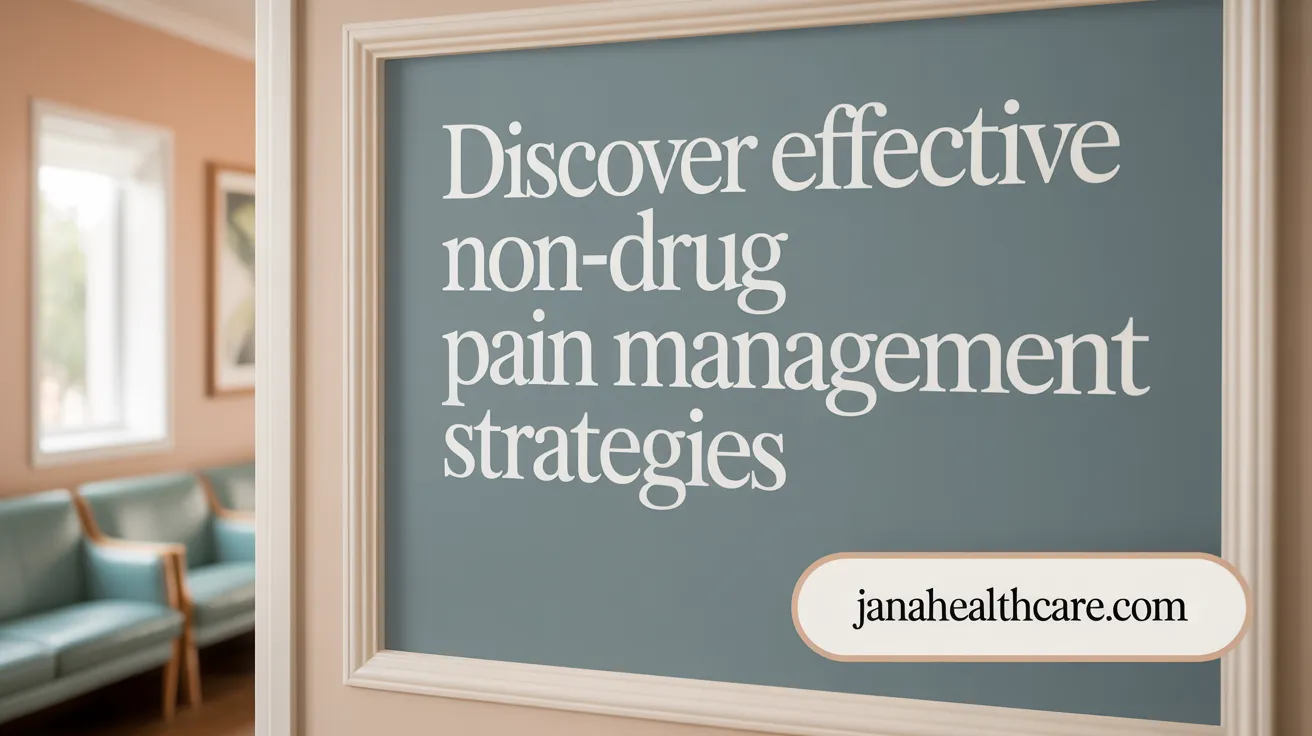 Many evidence-based non-drug pain management approaches can effectively alleviate chronic pain and improve quality of life. Acupuncture, a traditional Chinese medicine technique, involves inserting fine needles into specific body points to stimulate energy flow, which can help manage pain from conditions like back pain, migraines, and osteoarthritis. Massage therapy manipulates soft tissues to relax muscles, improve blood circulation, and reduce stress hormones, providing relief especially for musculoskeletal pain.
Many evidence-based non-drug pain management approaches can effectively alleviate chronic pain and improve quality of life. Acupuncture, a traditional Chinese medicine technique, involves inserting fine needles into specific body points to stimulate energy flow, which can help manage pain from conditions like back pain, migraines, and osteoarthritis. Massage therapy manipulates soft tissues to relax muscles, improve blood circulation, and reduce stress hormones, providing relief especially for musculoskeletal pain.
Psychological and mind-body therapies such as cognitive-behavioral therapy (CBT) and mindfulness meditation focus on altering thoughts, reducing muscle tension, and enhancing emotional resilience. These techniques help patients develop coping skills, decrease pain-related anxiety, and promote neuroplasticity—allowing the nervous system to adapt and diminish pain signals.
Biofeedback employs sensors to monitor physiological functions like muscle tension and heart rate, teaching patients to control these processes. This approach can lessen pain severity, particularly in headaches and fibromyalgia. Neuromodulation methods such as Transcutaneous Electrical Nerve Stimulation (TENS), ultrasound, and phototherapy target peripheral nerves and spinal cord pathways to block or modify pain signals.
While the effectiveness of these therapies can vary among individuals, they are generally safe and have minimal side effects. Integrating these modalities into comprehensive pain management plans, alongside patient education and gentle physical activity, fosters a multimodal approach that addresses both physical symptoms and emotional well-being. By combining multiple non-pharmacological techniques, clinicians can reduce reliance on medications, minimize adverse effects, and tailor treatments to each patient's needs, offering a holistic path toward pain relief and functional improvement.
Psychological Approaches and Self-Management Strategies for Chronic Pain
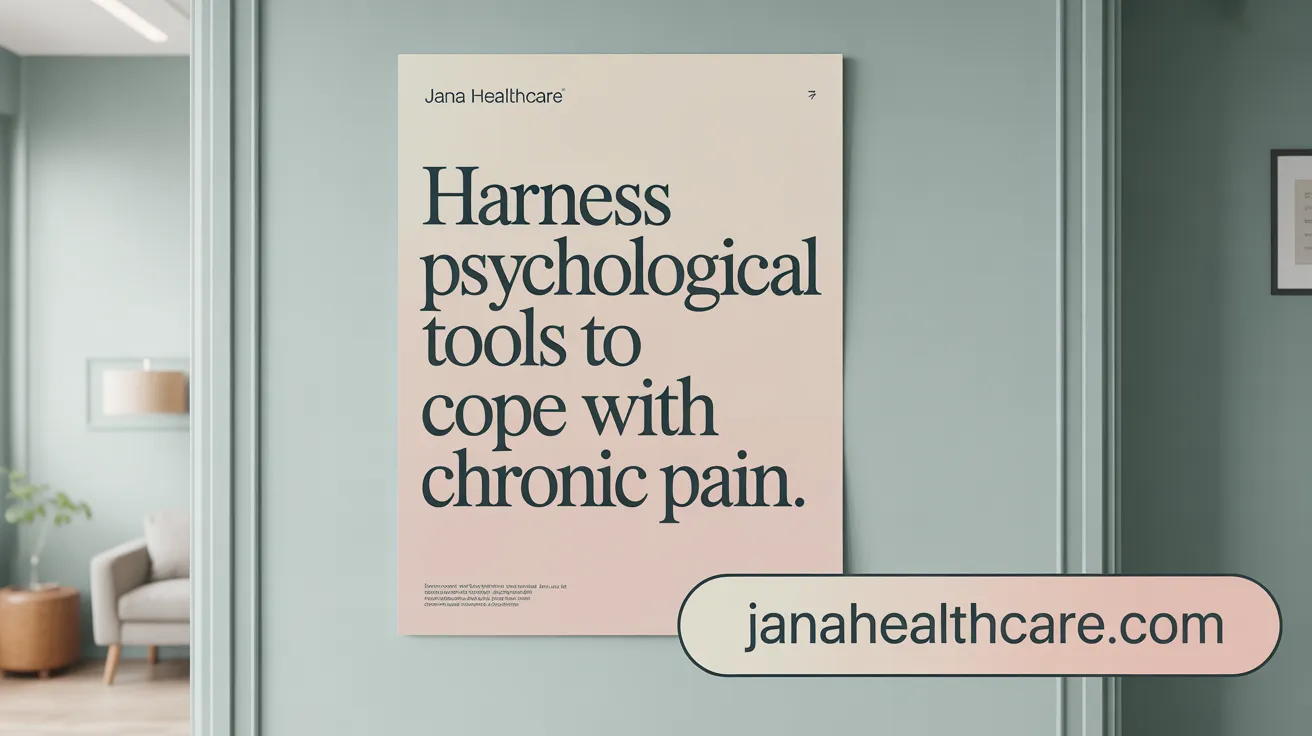
How are psychological and psychotherapeutic approaches used to manage pain?
Psychological and psychotherapeutic approaches play a crucial role in managing chronic pain by focusing on the emotional, cognitive, and behavioral aspects that influence pain perception and coping. Techniques such as cognitive-behavioral therapy (CBT) help patients recognize and modify negative thoughts and beliefs about pain, reducing catastrophizing and fostering resilient attitudes. Acceptance and commitment therapy (ACT) encourages patients to accept persistent pain while engaging in meaningful activities, minimizing emotional distress. Mindfulness-based stress reduction (MBSR) trains individuals to stay present and develop non-judgmental awareness of pain sensations, which can lower stress and improve pain tolerance. Biofeedback teaches patients to control physiological responses like muscle tension and heart rate, enhancing relaxation and stress management. Hypnosis can induce deep relaxation and focus attention away from pain, further alleviating discomfort. These therapies aim to improve overall functioning and emotional well-being, often used alongside medical treatments for comprehensive pain management. Combining psychological interventions with social support and lifestyle changes often yields the best outcomes.
What strategies and techniques can individuals employ to cope with and self-manage chronic pain?
Individuals can adopt various self-management strategies to cope more effectively with chronic pain. Pacing activities is essential; it involves breaking tasks into smaller parts, working at a manageable pace, and avoiding overexertion to prevent pain flare-ups. Relaxation techniques such as deep breathing, progressive muscle relaxation, and guided imagery reduce muscle tension and stress, which can amplify pain sensations. Gentle, gradual exercises like walking, stretching, or yoga improve strength, flexibility, and circulation, supporting pain reduction without increasing symptoms. Maintaining good sleep hygiene — such as sticking to a consistent sleep schedule, creating a relaxing environment, and avoiding screens before bed — enhances sleep quality and reduces pain sensitivity. Psychological approaches like mindfulness meditation and positive, constructive thinking help decrease stress and negative emotions that may worsen pain perception. Additionally, integrating heat or cold therapy, using assistive devices if needed, and following personalized treatment plans empower individuals to regain control over their symptoms. Engaging in social interactions, hobbies, and educational programs increases emotional resilience and promotes active participation in life despite pain. When combined, these strategies foster confidence, improve mood, and support sustained pain management through increased self-efficacy and reduced emotional distress.
Integrating Knowledge and Care for Effective Pain Management
Effective pain management requires a comprehensive understanding of pain's multifaceted nature, encompassing biological, psychological, and lifestyle factors. By integrating medical treatments with lifestyle modifications and psychological support, individuals can achieve improved pain relief and enhanced quality of life. Emphasizing personalized, multidisciplinary approaches enables tailored interventions that address the unique needs of each person, empowering them to reclaim function and well-being. As research continues to advance, the future of pain management promises more precise and holistic strategies that transcend pharmacology, fostering hope and resilience for those living with pain.
